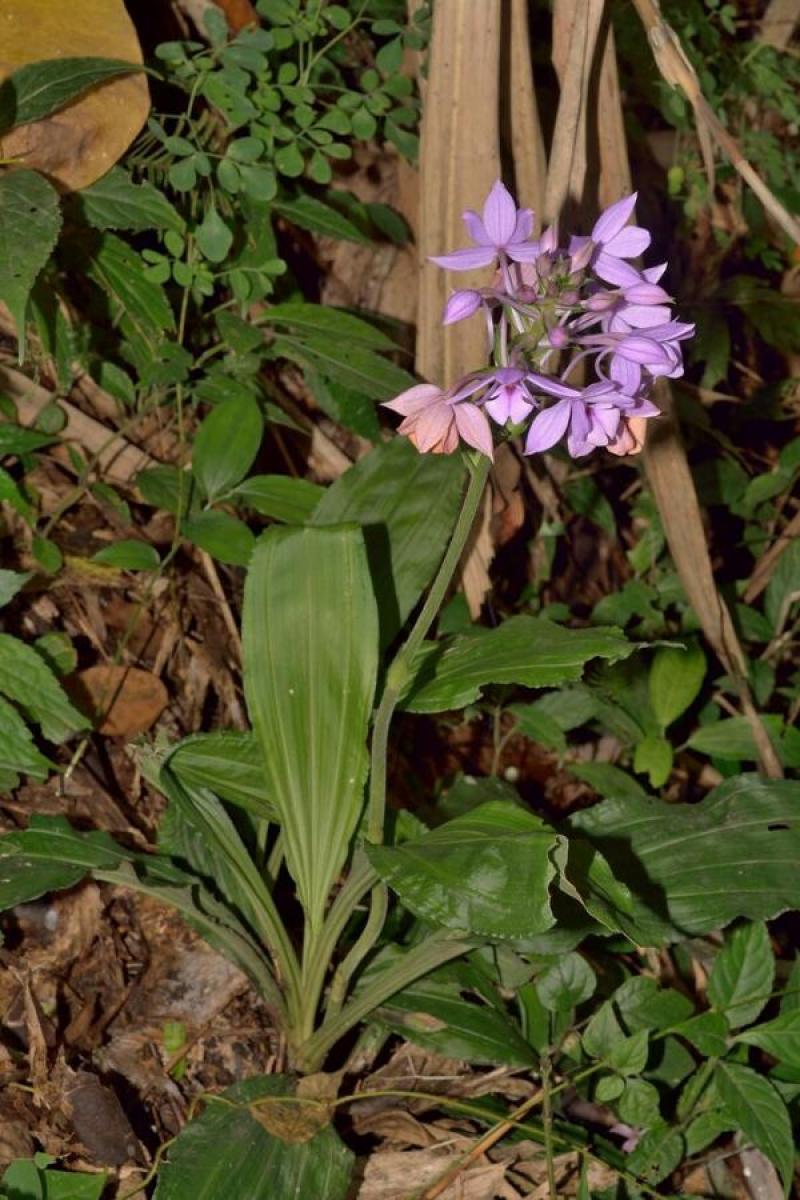Calanthe sylvatica
Also known as: The Forest or Calanthe sylvatica h.f. alba Calanthe sylvatica h.f. lilacina Calanthe sylvatica h.f. purpurea Calanthe sylvatica h.f. rosea Alismorkis sylvalismis Calanthe sylvatica var. natalensis Calanthe candida Calanthe corymbosa Calanthe sylvestris Calanthe sylvatica var. pallidipetala Calanthe sylvatica var. geerinckiana Calanthe neglecta Calanthe delphinioides Calanthe humbertii Calanthe stolzii Calanthe schliebenii Calanthe natalensis Calanthe volkensii Centrosia aubertii Centrosis corymbosa Centrosis plantaginea Alismorkis natalensis Alismorkis plantaginea Alismorkis centrosis Calanthe sanderiana in the subfamily: Epidendroideae
Native to: Guangdong - China Hunan - China Japan Karnataka - India Madagascar Sri Lanka Thailand West Bengal - India
General Information
The Forest is a medium sized cool to warm growing terrestrial orchid belonging to the sub family Epidendroideae native to China, Japan, India, Madagascar, Sri Lanka, and Thailand.
Plant Description
Grows to 40cm. Each new growth has numerous elliptic lance shaped leaves that grow to 10-40cm long. Pseudobulbs grow to 1-2cm. The plant forms clusters over time
Substrate(s)
- Fine
- Bark
- Charcoal
- Treefern
- Spaghnum Moss
- Perlite
Care Notes
These orchids grow on the forest floor so are used to rich soil containing plenty of organic matter that is always moist (but not always wet), and prefer constant conditions in terms of humidity, temperature and water supply. They may not be as forgiving as epiphytes in regards to sudden changes in growing conditions so it is wise to ease them into new conditions over a the space of a few days, and repot as infrequently as possible.
Keep an eye on the plants condition regularly as they can decline suddenly if the conditions are not just right. It is more important to keep water supply constant rather than frequent - overwatering often causes rot which can quickly set in, especially in warmer conditions.
These can be grown in shady, moist areas in the garden, supplied they have protection from abrupt changes caused by the elements, e.g. dry winds, frost etc. Being grown around companion plants such as ferns and bromeliads will help build and retain the humidity they require throughout the year.
Climate
The orchids are well adapted for hot weather, accompanied by sporadic, unpredictable rainfall and a generally dry climate. They can tolerate a lot of neglect as they are quite used to it, however they can be prone to underwatering and may collapse in cold, wet weather.
For this reason it's best to dedicate a sheltered, protected area for them where the watering can be controlled, such as a corner of a greenhouse or in a sheltered balcony. They can also do well hung near the roof of a shadehouse or sheltered greenhouse where they receive the extra heat but not as much water as other plants.
Grows at low to high elevations. Rainfall ranges from 8mm to 292mm per day, heaviest in September and lightest in January. Humidity ranges from 58% to 83%, highest in August and lowest in March. Temperature ranges from 9C to 31C, highest in April (19C to 31C) and lowest in January (9C to 24C).Fertiliser
dormant-medium-demand-orchid Use balanced fertiliser year round. Apply fertiliser regularly at half strength year round. Use a high Nitrogen fertiliser during Spring and Summer. Use a high Phosphorous fertiliser during Summer.
Potting
This orchid prefers a fine, well draining media. Avoid commercial potting mixes as they may have 'wetting agents' that retain water for too long. A simple mix made up of 20% sand, 50% peat or moss, with the remaining 30% made up of decomposed bark and leaf litter would be adequate. Adding some charcoal to the mix will also help it last longer.
Repotting depends on how wet the media is usually. Every 2-3 years would suffice, or whenever the media shows signs of clumping, staying wet for too long, or smells foul.
This plant does well mounted. Repotting is best done annually and in Spring.




















